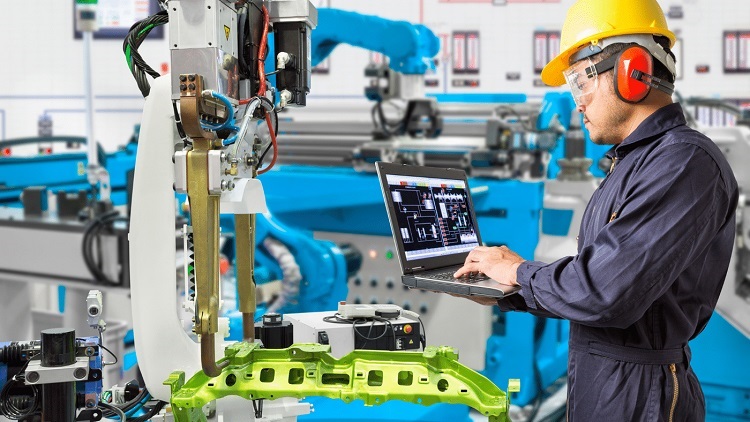Manufacturing has always focused on efficiency. AI changes this, though not in the science fiction way people imagine. Factories around the world are using these systems right now. Some see big improvements, others see modest gains.
Table of Contents
Start by Getting to Know AI’s Role in Your Factory
AI won’t replace all your workers. Think of it more like a computer that processes data really fast and never needs coffee breaks. Most factories already have sensors collecting information all day long.
AI looks at this data differently than humans do. Maybe your line always slows down at 2 PM on Tuesdays. Or temperature changes predict quality problems three hours later. AI spots these patterns that slip past human observation.
Pick one area where you’re already collecting data. See what AI tells you about it. Don’t try to revolutionize everything at once.
Use AI to Catch Problems Before They Happen
Equipment breaks down. Usually at the worst possible time. Regular maintenance schedules help, but they’re not perfect – you end up fixing things that aren’t broken or dealing with surprise failures.
Predictive maintenance with AI monitors vibration, temperature, power consumption, and other factors continuously. When something starts trending toward failure, you get warned weeks ahead of time.
An automotive plant cut unplanned downtime by 40% using AI on their assembly line motors. The system learned what normal looked like for each motor. Anything unusual got flagged immediately.
Let AI Help with Quality Checks and Product Inspections
Human inspectors do their best, but they have limits. AI vision systems check products faster than any person could. They’re also consistent – no bad days or getting tired near the end of shift.
These systems catch tiny scratches, color differences, size problems, defects you’d never see without magnification. They get better over time too as they examine more products.
One electronics company found they caught 95% more defects after implementing AI inspection. False positives dropped significantly, which meant less good product getting thrown out.
Team Up with Robots and Smart Machines
Collaborative robots work next to people instead of replacing them. They handle the repetitive stuff, heavy lifting, or dangerous tasks. Workers do the complex jobs that need creativity and problem-solving.
AI makes these robots adapt to different situations. They adjust their movements for specific parts or change their approach when something unexpected happens.
Cobots can be reprogrammed without major hassles. When production needs change, the robots adapt too.
Make Smarter Decisions with Real-Time Data
Manufacturing creates tons of data every minute. Production numbers, energy use, material consumption, worker productivity – the information never stops flowing. AI turns this into something useful.
Dashboards powered by AI show you what’s happening across your whole operation in real time. Problems show up immediately instead of at the end of the week when it’s too late to fix them easily. Setting up these sophisticated data systems often requires specialized IT support for manufacturers to ensure everything runs smoothly and securely.
Energy management benefits here too. AI predicts power demand and adjusts systems accordingly, which saves money on utility bills.
Keep Your Supply Chain Running Smoothly
Supply chain problems happen more often now. AI analyzes how suppliers perform, shipping patterns, inventory levels, plus external stuff like weather and political issues.
When AI predicts delays or shortages, you have time to line up backup suppliers or change production schedules. Being proactive beats scrambling after problems hit.
Save Time and Money by Automating Routine Tasks
Administrative work takes up more time than you’d think. Processing purchase orders, scheduling, inventory tracking, compliance reports – AI can handle most of this stuff.
Speed isn’t the only benefit. Accuracy improves too. AI systems don’t transpose numbers in invoices or forget to check for duplicates.
The time savings add up fast. Your people can work on strategy instead of paperwork.
Make Your Factory Safer for Everyone
Safety comes first. AI adds another layer of protection through computer vision that watches work areas. The system alerts supervisors when workers aren’t wearing safety gear or enter restricted zones.
AI can predict when safety incidents are more likely based on time of day, production pace, or environmental conditions. This lets you take preventive action instead of just responding to accidents.
Some companies use AI to analyze near-miss reports and spot patterns that might indicate bigger safety problems.
Train Your Team to Work Alongside AI
Technology only works as well as the people using it. Your workforce needs training to use AI systems effectively. Not everyone needs to become a data expert, but they should understand how these tools help them do better work.
Things go smoother when employees see AI as helpful rather than threatening. Involve workers in the planning and show them how AI makes their jobs easier.
AI in manufacturing focuses on getting better incrementally and making decisions with better information. Companies starting to experiment with this technology now will have an edge as capabilities keep improving.

